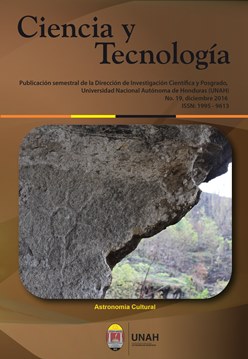The use of morphine meal as a protein ingredient for feeding tilapia
DOI:
https://doi.org/10.5377/rct.v0i19.4273Keywords:
balanced diet, protein source, morro meal, performance indicators, amino acidsAbstract
The cultivation of tilapia generated in Honduras 70 million dollars in 2014, positioning the country as the first exporter of fresh fillet of tilapia in the world. Tilapia is an easy-to-handle crop; however, 60% of the total production costs are feed and since balanced diets are kept on the rise due to the increase in some inputs such as fishmeal, soybeans and maize, Aquaculturists are looking for alternative sources of protein that will lower food costs; In view of this situation, the flour of morro can be an option. The study was carried out at the Aquaculture Fisheries Research Center, four concrete tanks with 1.86 m3 of capacity were used, in each tank 45 tilapia (24.2 fish per m3) were planted at an initial weight of 5 g and harvested 256 days later. The fish were fed a balanced diet at 28% PC and an experimental diet based on sorghum, molasses and nose (82.7%), with 28% PC. Performance indicators and biometric relation were evaluated. Fish fed the balanced diet showed better results in performance indicators; In the fish fed the experimental diet, the daily weight gain was lower (P> 0.0356). Fish with greater length and weight were found in those fed the commercial diet; In both treatments a high correlation between length and weight was observed (r> 0.90). Morro meal can be used as a protein ingredient with the inclusion of foods rich in the amino acids of lysine, methionine and threonine.
Revista Ciencia y Tecnología No.19, diciembre 2016, 25-39
Downloads
3080
Downloads
Published
How to Cite
Issue
Section
License
© Revista Ciencia y Tecnología
Authors who publish in this journal accept the following conditions: In accordance with the legislation of copyright, Revista Ciencia y Tecnología, recognizes and respects the moral right of authors, as well as the ownership of the patrimonial right, which will be ceded to the magazine for its diffusion in open access in printed version and in digital format. By being part of multiple indexers, databases and reference systems, the articles published by Revista Ciencia y Tecnología will be visible and will be downloaded from these websites, indicating, in all cases, the authorship of the articles, the date of publication and the number of the journal to which they correspond.




